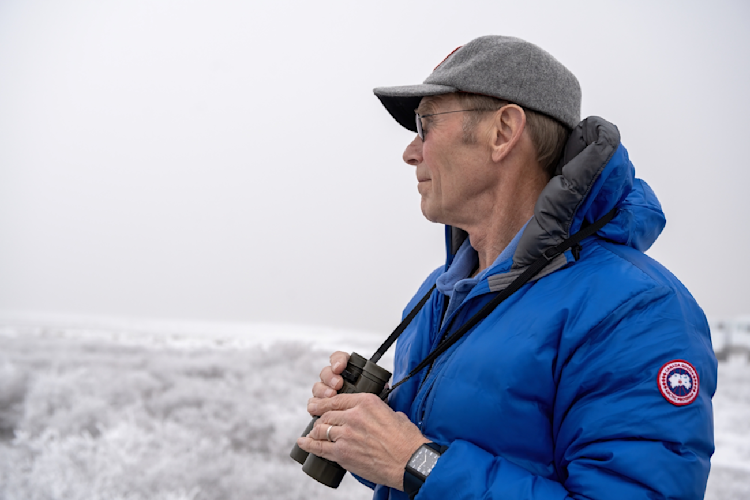
Photo: BJ Kirschhoffer / Polar Bears International
Floating Platforms in the Arctic
MINS
24 Jun 2021
“Giving polar bears a place to rest doesn’t solve the polar bear’s main problem, which is finding food if there is no sea ice.”
Many people have suggested transporting floating platforms to the Arctic to replace the sea ice that we’re losing due to human-caused global warming. While the suggestion sounds like it would be helpful in a melting Arctic, giving polar bears a place to rest isn’t practical and doesn't solve their main problem.
Polar bears depend on the sea ice as a platform for hunting seals, the mainstay of their diet. They also rely on the sea ice for breeding, roaming, and sometimes denning. But the most significant thing to understand is that sea ice is far more than a platform: It's an integral part of the Arctic ecosystem. Sea ice is the “soil” for the Arctic marine food web. As the salty ocean water freezes, the salt is pushed out, creating briny channels and pockets underneath the ice. Tiny microorganisms thrive and grow in this unique environment. These small organisms play a key role in the Arctic food chain, creating a food base for Arctic cod, which then feed ice seals, which then feed polar bears.

The Arctic Food Web
The sheer scale of newly open water is also a factor. Between 1979 and 2021, the Arctic lost a total 1.35 million square miles of summer sea ice cover—an area four and a half times the size of Texas! Imagine the effort and cost to manufacture and deploy any kind of alternate platform to even come close to the area of sea ice polar bears have already lost.
Rather than being distracted by thoughts of fake ice or floating platforms, societies around the world need to act with urgency to halt global warming. If we don’t, sea ice ultimately will disappear and so will polar bears.
We view the situation of diminishing sea ice in the Arctic as extremely serious but not hopeless. The key to saving sea ice and getting our climate back to functioning the way it should is to move away from using fossil fuels like oil, gas, and coal altogether, shifting instead to energy sources like wind, solar, and water. As this shift is underway, we can also help by embracing energy efficiencies that reduce our use of fossil fuels and by choosing green energy options if they’re available in our communities.
The most recent U.N. climate report underscores the seriousness of the problem but also provides a suite of solutions to address it. We must remember that the answers are there—what we need now is to work together to realize these changes and to urge our leaders to remake our societies in ways that will lead to a more stable, peaceful, and healthy future, acting with the urgency and respect that life across our Earth deserves.
Please visit the Become Part of the Solution section of our website to find out how you can get involved in protecting the polar bears’ future and saving our own. Also check out our Advocacy Toolkit.

Photo: Jenny Wong
Meet Our Scientists
With researchers based in the U.S., Canada, Denmark, and Norway, our impact spans the circumpolar Arctic.















